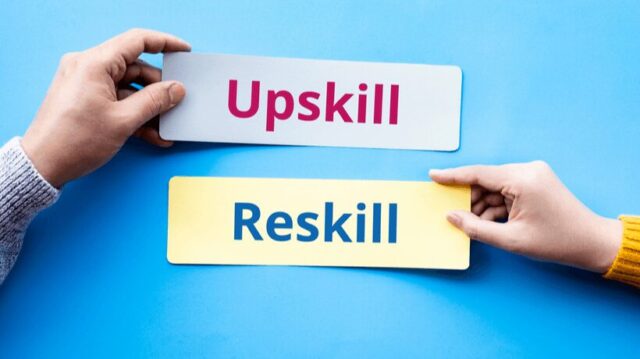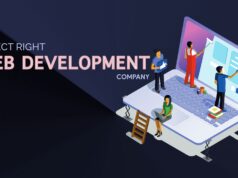
The pace of technological change is faster than ever before. Emerging technologies like artificial intelligence, automation and virtual reality are fundamentally transforming how work gets done. Organizations are increasingly investing in upskilling and reskilling programs to ready their people for the future of work.
Page Contents
Assessing Skill Gaps

The first step in any upskilling or reskilling program is identifying current skill gaps across the organization. Take a strategic approach to talent assessment by conducting job analyses to clarify technical, soft, and digital skills required for each role now and in the next 5-10 years. Identify anticipated gaps.
Assess the workforce’s baseline capabilities in relevant skill areas through testing and surveys. Diagnose which skills are lacking at an individual and organizational level. Model future talent needs under various scenarios. Forecast skills that will be in demand, declining and emerging as the business and technology landscape evolves.
Analyze trends in your industry to anticipate impacts on talent needs, such as automation, new production techniques, or shifting customer expectations. Consider potential regulatory changes as well. Talk with managers to surface hard-to-fill roles and skills missing on current teams. Gather qualitative insights to supplement quantitative diagnostics.
Creating Upskilling Pathways
With gaps identified, next create pathways to help employees build in-demand skills. Evaluate employees’ strengths, development areas and interests. Assess who is motivated to upskill versus who may need additional encouragement.
Group employees into segments by current skill levels and capability upside. Tailor learning journeys for employees at beginner, intermediate and advanced stages.
Prioritize must-have skills needed across the workforce, like digital literacy, data analysis or customer experience. Develop programs to elevate universal competencies. Offer curated development paths for specialized skills like coding, machine learning and design thinking.
Enable employees to build deeper expertise in areas of interest and aptitude. The most effective upskilling programs meet learners where they are and provide flexible development opportunities.
Executing Effective Reskilling Programs

While upskilling fine tunes existing skills, reskilling aims to build entirely new competencies that prepare employees for other roles. It is essential to identify target roles for reskilling based on business needs. Redeploying existing employees is often more cost effective than hiring externally.
Assess transferable skills between old and new roles in target development areas. For example, a salesperson may just need a technology module to reskill as an account executive. Allow employees to self-select into reskilling for roles they are intrinsically motivated to pursue. Interest and aptitude increase success rates.
Offer shorter-term reskilling programs when possible, customized to target role needs. Multi-year programs face higher drop-off risk. Partner with external providers like online bootcamps to enable cost-effective reskilling at scale. These platforms provide flexible access to in-demand training content.
Continuously evaluate reskilling program effectiveness based on retention, job placement, wage growth and other metrics. While more intensive than upskilling, reskilling has profound benefits when executed well. Employees gain purpose, drive, and expanded career options in the process.
PEO Services Support Strategic Transformation

HR teams often need external support when undertaking large-scale workforce transformation initiatives. According to the good folk at VertiSource HR, professional employer organizations (PEOs) provide partnership through phases of planning, program design, talent assessment, content development and analytics.
Unlike staffing firms, PEO services serve as an extension of HR, bringing strategic guidance and program management expertise. Organizations see faster speed to scale and effectiveness when partnering with PEOs for upskilling and reskilling programs.
Conclusion
With technology and market changes accelerating, upskilling, and reskilling have become imperative for organizational agility and resilience. While transforming workforce skills requires investment, the long-term payoff is talent that evolves as fast as the future unfolds. Upskilling and reskilling keep employees engaged and empowered through constant learning.































